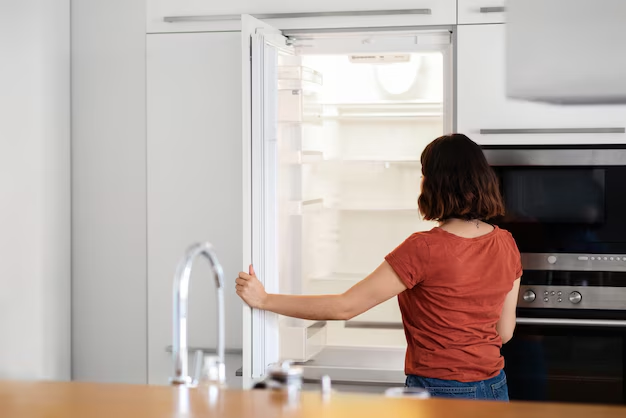Discovering the Location of Your Refrigerator Compressor: A Comprehensive Guide
Have you ever wondered where the magic happens inside your refrigerator? While it might not be evident at first glance, the compressor is an essential component behind the cooling prowess of your fridge. Understanding where the compressor is located and how it functions can add a refreshing level of clarity to your appliance experience. So, let's delve into the workings of your refrigerator and uncover the mystery of the compressor’s location.
📦 What is a Refrigerator Compressor?
Before we locate this crucial component, it’s important to grasp its role within your refrigerator. The compressor serves as the heart of the cooling system. It pumps refrigerant throughout the appliance, enabling the heat exchange process that keeps your food fresh. The compressor compresses the refrigerant gas, raising its pressure and pushing it through the condenser coils. As it travels, it releases heat and turns into a liquid, which then cools and cycles back to absorb more heat from inside the fridge.
🚪 Common Places to Find the Compressor
Hiding Behind the Scenes
Traditionally, the refrigerator compressor is located at the back of the appliance. This strategic position keeps it out of sight and provides ample space for it to operate efficiently without unnecessary exposure to heat or vibrations. You may find it behind a panel or under a protective cover, which prevents any accidental contact.
The Base of the Appliance
In many refrigerator models, the compressor is located at the bottom rear part. If you gently pull your refrigerator away from the wall and examine the lower area, you’ll likely spot the compressor nestled adjacent to the condenser coils.
Sleek Side Location
Some modern refrigerators, particularly those with slimmer profiles, might have their compressors housed on one side of the unit, incorporated in a way that contributes to the sleek design. These models might employ advanced heat exchange systems that allow for such an arrangement.
🛠️ How to Safely Access the Compressor
Safety First!
Before you start exploring the nooks and crannies of your refrigerator, ensure it’s safe to do so. Always turn off and unplug the refrigerator from the power source to prevent any electrical hazards. Make sure the surrounding area is clear to freely move the appliance if necessary.
Gaining Access
To access the compressor, follow these steps:
- Gently Pull Away: Carefully slide the refrigerator away from the wall to reveal the rear or side, where the compressor is typically found.
- Remove Any Covers: If there are any protective panels or covers, unscrew or unclip them with the appropriate tool.
- Inspect Visually: Look for the compressor, which usually resembles a metal cylinder with wires and pipes connected to it.
Maintaining a Safe Distance
Even with the power off, avoid handling the compressor unnecessarily. It's vital to respect the capacity and engineering of these components to prevent any unintended damage or disruptions in functionality.
🔧 Troubleshooting Common Compressor Issues
While the likelihood of a compressor failing before the appliance itself is relatively low, understanding potential issues can be helpful for early detection and resolution.
🚫 Warning Signs
Be on the lookout for these common symptoms that might indicate a compressor problem:
- Unusual Noises: Continuous humming, buzzing, or clicking sounds that aren't part of the usual operating noise.
- Excessive Heat: When the compressor is too hot to touch, it may be overworking.
- Inconsistent Cooling: If the interior temperature is fluctuating or not maintaining its set level, the compressor could be struggling.
🌐 Resolving Issues
If you suspect an issue with your compressor, here are some practical steps:
- Check Power: Ensure that your refrigerator is properly plugged in and receiving power.
- Inspect Coils: Clean the condenser coils, which can gather dust and obstruct airflow.
- Professional Help: For anything beyond routine maintenance, consult a professional technician to assess and repair the problem.
🏠 Factors Influencing Compressor Efficiency
Optimal Placement
Keep your refrigerator in a space where there’s sufficient air circulation. A well-ventilated area prevents the compressor from overheating and extends its lifespan.
Regular Maintenance
Conduct regular maintenance—like cleaning dust from coils—to boost overall efficiency. An efficient compressor means a reliable refrigerator that optimally preserves perishables.
Energy Consumption
An efficiently running compressor can significantly impact your electricity usage. Many newer units include energy-saving technologies that make them more eco-friendly and cost-effective.
🧰 Quick Summary of Key Points and Tips
Here's a handy summary of key insights on refrigerator compressor location and maintenance:
- 📍 Common Locations: Usually found at the back or rear bottom of the fridge.
- ⚠️ Safety: Always unplug the appliance before checking or cleaning.
- 🔨 Troubleshooting: Unusual sounds or inconsistent cooling indicate potential issues.
- 🌿 Efficient Operation: Regular cleaning and proper placement help prevent overheating.
By understanding and appreciating the function, location, and care of the refrigerator compressor, you can ensure your appliance continues to serve you efficiently and effectively for years to come.
Finally, remember that while the compressor is vital, your refrigerator’s overall health extends to all its components. Regular check-ups and maintenance are critical. Whether you're troubleshooting, conducting routine cleaning, or simply being interested in the mechanics, keeping your refrigerator in top shape ensures your groceries remain fresh and your energy bills stay under control.
